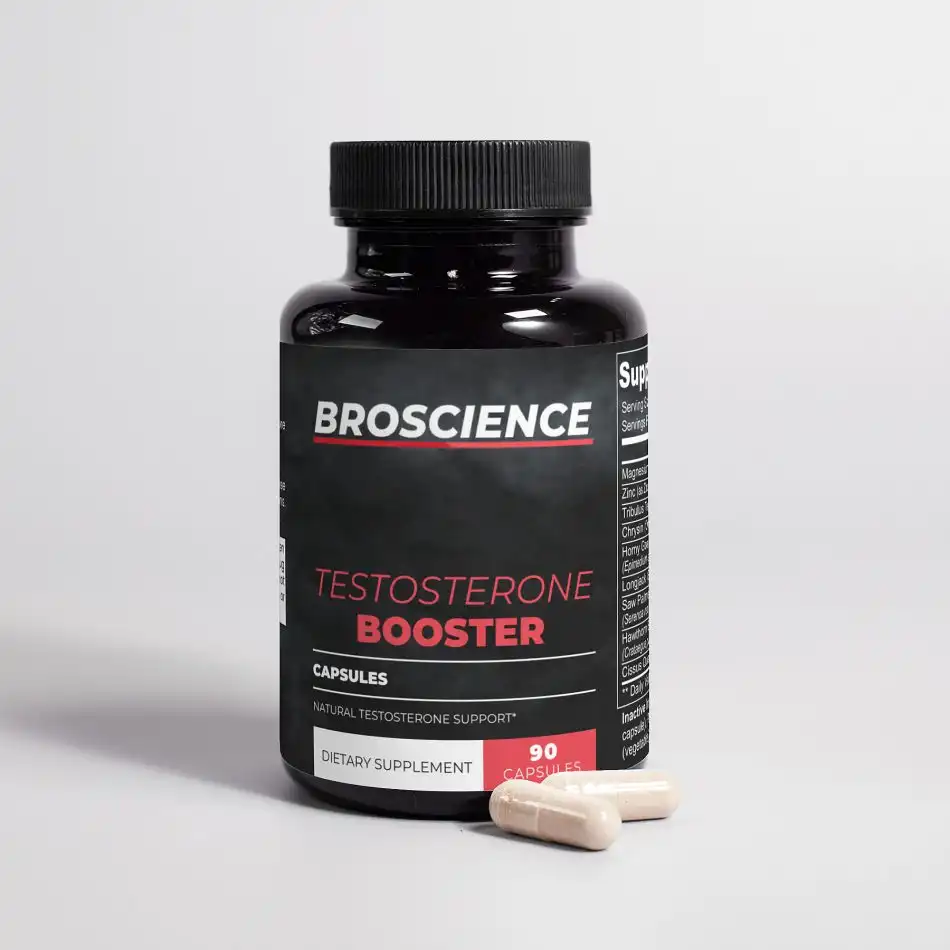
You landed on this page because you want to learn how to squat properly by avoiding common squat mistakes.
Here’s the deal:
By the time you’re done reading this article, you will be a master squatter….or at least better than you are right now.
This article contains the 10 most common squatting mistakes to avoid and how to fix them quickly & easily.
The mistakes are listed from most common to least common from what I have found with my 15+ years of being a health & wellness professional. You will learn everything from how to position your knees to the proper depth of a squat.
Unleash the full testosterone-producing potential in your body. Improve muscle growth and increase fat loss fast.
Dig in and get ready to grow some glutes!
Top 10 Squat Mistakes
1. Depth of the squat
It’s super impressive when you can load four plates on a bar and un-rack it. It’s even more impressive when you can actually move it in a respectable way. Probably the most common squat mistake ever.
Look:
We’ve all seen the guy at the gym who loads up a huge stack on the bar, un-racks and does a “mini” squat. LAME! Please don’t be that guy. Not only is he not building any muscle, but he’s definitely not getting any chicks with a lift (or legs) like that.
The Fix:
My Top Recommended Supplements
As you squat down be certain the top of your thigh comes just below parallel to the floor. This is minimal depth. Ideally you would go down further, even to the point that your butt hits your heels. But not everyone should…
Let your spine guide you!
Stand up right now as you read this; squat down and pay attention to your tailbone. What you will notice (some may not) is that at some point below parallel, your tail bone “crashes”, or begins to tuck under (Walsh JC et al). When this happens, you have found your squat depth!
Side note;
Widening your stance & rotating your toes out will often allow you to go deeper too.
If this happens before you reach parallel, you have some other things to work on. Check the remainder of this article for some simple fixes that will address depth too. If that fails, get yourself a personal trainer or see a physical therapist who can help you.
2. Knees Knock
Watch your knees while you squat. Do they come towards each other? They don’t have to touch, even as little as an inch of your knees wavering inward, one or both sides are a sign you’re using the wrong muscles while squatting.
The worst part:
Not activating the right muscles means you’ll never get big weights on the bar and your legs, mostly your butt will never look muscular. And likely this will lead to injury.
Side note;
Are you serious about FINALLY losing that stubborn belly fat? Then this is for you. Powerful fat burner that helps you supercharge your metabolism for fast results.
You know how the best female ass (in my humble opinion) is the kind that bubbles out and tucks tight like a capital “D”? Well, those asses come from properly using the gluteus maximums muscles! The ones that would prevent knee collapsing on the squat.
So yes;
Legal muscle-building supplement that's designed to mimic the effects of dianabol without all side effects.
It is your gluteus maximus muscles that are not firing properly, allowing your knees to collapse in (Hollman JH, et al). Lucky for you there is a very simple fix to this that will get your glutes firing and your butt looking plump!
The Fix:
Tie a resistance band around your legs, just above knees. The band should be fairly taught so it is pulling your knees together. Now do your squat. This extra resistance pulling your knees together makes your brain super concerned about opposing the force and pulling apart (Foley RCA).
Just like that, Boom!
Your lazy butt muscles are working!! Do this for a couple weeks with your leg workout and practice some bodyweight squats like this too. Then try squatting without the band. You will find your knees pulling apart as though the band were still there.
3. Heels coming off floor
If you go to squat and your heels lift off the floor, then you buddy, have an issue. This is one of the squat mistakes that can cost you some serious damage.
When your heels are coming off the floor it tells me your entire kinetic chain (fancy way of saying the way your body moves) is F’d up.
Good news:
Likely this problem stems from one of two areas, sometimes both. The fact your heels lift tells me there is tension on the posterior (back) side of your body, not allowing it to move as freely as it should.
Digging in, lets explore you calves and thoracic spine.
Calves:
If you have tight calves and/or tight posterior leg fascia this will not allow your ankle to flex up toward your shin (Kuschner, A et al). As a result, your heels lift to allow the movement to still happen.
Thoracic spine:
If the problem lies in your thoracic spine, you likely lack extension there. This means rather than your chest being high and proud A.K.A. good posture; your slumped like a hunchback.
Now when you go to squat there is an array of issues happening that ultimately leads to the heels coming off the floor….and other things we will discuss later.
The Fix:
Simple! Put a 5lb or 10lb weight plate under your heels while squatting. This relieves that posterior chain tension and voila! Your squatting like a pro!
As for those tight calves, do some stretches too, this will only help. You don’t want to use the plates under the heels forever.
If the problem if the thoracic spine, please refer to issue #6…Cannonball ass
4. Knees forward
Look at your squat from the side.
When you move down do your knees go past your toes?
If so;
STOP SQUATTING!
This is a great way to wind up injuring your knees; especially if your trying to go heavy.
Your knees can be overloaded in this position very quickly and repeated exercise sessions with this poor form will compound the damage (Meyer GD, et al).
Like most of these squat issues, this is likely accompanied by others on this list, so please check them all.
The Fix:
Think about taking a shit.
When you go to sit on the toilet you probably have near perfect squat form.
Your feet are well placed, your reach back with your hips, then begin your decent.
Perfect!
So how do your replicate this with a barbell on your back?
Place a bench behind you when you do your squat. This will give your butt something to reach for, just like when you’re sitting upon the throne.
Tip:
Don’t fully sit on the bench, just tap your butt to it and come back up. If you fully unload it will be very hard to get back up.
5. Stance – Don’t Go Limp….
Your stance is super important to getting your squat right. Really, nothing else matters more.
Don’t go limp:
Every mans’ worst nightmare….you look down and your limp!!
Your feet that is! By limp feet I mean when your feet collapse in; leading to other kinetic chain problems and pain in knees, hips and back.
Some just get it:
Innately a good chunk of people just get this right. But even for those who get it right, they probably aren’t thinking about all the pieces.
The Fix:
How to properly stand while doing a squat:
- Feet should be about shoulder width apart with the toes pointed slightly outward. Recall, this may vary based on what you found with your squat depth.
- Think about 3 points of contact with the ground; base of the big toe, base of the pinky toe and center of the heel.
- Act like your grabbing the floor with those 3 points and “screw” your feet into the ground with an inward rotation that doesn’t really move the feet, but activates them.
If done properly you may notice you have a nicely formed arch in your foot and you may feel a slight burn in the bottom of your feet. This is your intrinsic foot muscles working! - Hold this, squat and enjoy!
If your foot still flops down like a dead fish, you may require an orthotic for your shoes. But try seeing a physical therapist who specializes in feet first to get the muscles working properly.
6. Cannon Ball Ass – aka. Chest dropping & butt shooting out
This is one of my most feared squat mistakes. Mostly because the resulting injuries are so bad.
Look around the gym, you’ll see this happen.
Someone will go to squat, their butt goes back and descends, but only a little. The bar keeps descending because the person is bending at their waist, dropping their chest. Return to start and repeat.
STOP!!!
If this is you, a friend or anyone at the gym, stop and read this!!
Similar to the heels coming off the ground, this is usually due to posterior chain tightness. In this case it is most likely coming from your thoracic spine (Myer GD et al). For sake of this article, we will act like that is the only thing happening.
The Fix:
It all comes back to weight plates under the heels.
Being tension is the issue, you must relieve that tension. Placing weight plates under the heels will likely allow you to fix this squat mistake quickly.
Now, to fix that spine:
Step one;
Stop using your electronics with shitty posture. It’s very unattractive.
Step 2;
Lay on a stability ball with it about the level of your shoulder blades, toss your arms back so they lay open like you’re doing the “Y” in YMCA. Relax for a minute or two, repeat multiple times daily.
Step 3;
See a chiropractor.
7. Asymmetrical Movement
There is a variety of asymmetrical movements that can happen when squatting, each one has a unique origin and likely requires the attention of its own. We usually have no idea our body is compensating the way it is until someone draws attention to it.
The cause:
Usually an injury causes this squat mistake, old or new that caused our body to move differently to avoid pain. Now it’s just an ingrained dysfunctional movement pattern.
This also may not be from an injury, and just a poorly developed movement pattern. Fix it now to avoid future injury (Chimera NJ et al)!
The Fix:
First, lets find the cause:
Have a buddy watch you do slow body-weight squats and unloaded barbell squats from the side, back and front. If your buddy sees any asymmetrical movements, note them.
We will cover the most common.
Butt goes to the right (or left):
If your butt is going to the right it means you likely have or had an injury to the left side of your lower body; foot/ankle, knee, hip. If you can recall the injury and location, try doing some soft tissue work on it. This should feel good & bad at the same time, like a deep massage.
If it only hurts, Stop and see a professional (chiropractor, physical therapist, personal trainer).
Soft tissue work would be taking something like a lacrosse ball and pining it between your injured area and the wall or floor and rolling it out. This helps break up fascial adhesions and scar tissue that may form after an injury.
Often you will notice an improvement in movement & feeling after doing this.
Sometimes muscles shut down with injuries too. Try something like the band around the knees from the “Knee Knock” section to help activate them.
Upper body leans or rotates right (or left):
The upper body will lean or rotate away from injuries too. Try the same tactic here with the soft tissue work to the spot of injury. Difference is upper body stuff tends to be a bit more sensitive, so start with a foam roller against the wall and work to the lacrosse ball.
If these simple tactics don’t work, please go seek help from a professional. It is possible there may be a more serious underlying cause than simply fascial adhesions and/or scar tissue.
8. Get a Grip
There is a ton of variation in the way you can grasp the bar for a squat. I am not going to tell you the way I say is the best, but it makes the most sense physiologically.
The Fix:
Proper bar grasp for back squatting:
- Rest the barbell centered on your upper trapezius, not your neck!
- With your ring finger on either hand wrap the ring on the bar and allow your other fingers to fall into place around your ring finger.
Note; if you’re really tall or really short you may use your index or pinky finger respectively, as your guide finger. - Pull the elbows under the bar and think about pushing them forward while pulling your shoulder blades down. This pushes your thoracic spine into extension.
- Now hold this position through the squat.
Note; DO NOT give a death grip to the bar, a light hold will do just fine.
9. Where To Look
Where should you look when squatting?
Some look up towards the ceiling, some look at the floor, some creepily stare at the girl doing deadlifts. Although I can’t argue against the last one, there’s only one place you should be looking while squatting, and that’s straight ahead. Everything else is considered a squat mistake.
Looking up can feel right because it forces your back into extension and may seem easier to squat that way, but it isn’t safe. It puts the neck in a compromised position (Myer GD et al) and can make some people dizzy. Not cool with a barbell on your back.
Looking down tightens that entire posterior chain that we chatted about earlier. This will amplify other problems or create new ones. Also, you can’t see what you’re doing.
The Fix:
The proper place to focus is straight ahead.
If there’s a mirror in front of you, look yourself in the eyes, while monitoring your form via your peripheral vision. This ensures you avoid this squat mistake.
If you absolutely need to glance at the girl doing deadlifts, do it at the top of the movement, refocus and squat on.
10. Breathing
This is last on the list, but probably the most important.
Breathing properly while doing a squat can make or break a lift & you….
Stroke….
Improper breathing does increase pressure to the point a stroke is possible (Haykowski MJ et al).
However, the research is conflicted.
Holding your breath stabilizes your core so you can actually lift more (Hackett DA, et al)
The Fix:
This greatly depends on you. If your overall a healthy person with a well trained core and no family history of cardiovascular health problems (stroke/anyrism/heart attack, etc.) then lift heavy and hold your breath to help you get that extra stabilization & strength.
But……
if you have high blood pressure or other cardiovascular health problems, or even a family history of it. Follow the steps below to be on the safe side.
- Breathe in as you descend into your squat.
- As you return to the top exhale; but exhale with resistance through the entire way up. What I mean by this is blow your air out through pursed lips, keeping your core engaged.
I like to error on the side of caution when it comes to the possibility of death…..
Furthermore;
I have found my prescribed “Exhale with resistance” to be nearly as effective as holding the breath, just without the dizzy spell at the top.
Recap:
You have been given some great tools and solutions to some common squat mistakes. Now take this information and do the most challenging thing…..apply it.
Happy Lifting,
Dr. David Hopper
References:
- 1. Walsh, James C., et al. “Three-Dimensional Motion Analysis of the Lumbar Spine during ‘Free Squat’ Weight Lift Training.” The American Journal of Sports Medicine, vol. 35, no. 6, 2007, pp. 927–932., doi:10.1177/0363546506298276.
- 2. Hollman, John H., et al. “Relationships between Knee Valgus, Hip-Muscle Strength, and Hip-Muscle Recruitment during a Single-Limb Step-Down.” Journal of Sport Rehabilitation, vol. 18, no. 1, 2009, pp. 104–117., doi:10.1123/jsr.18.1.104.
- 3. Foley RCA, Bulbrook BD, Button DC, Holmes MWR. EFFECTS OF A BAND LOOP ON LOWER EXTREMITY MUSCLE ACTIVITY AND KINEMATICS DURING THE BARBELL SQUAT. Int J Sports Phys Ther. 2017;12(4):550-559.
- 4. Kushner AM, Brent JL, Schoenfeld BJ, et al. The Back Squat Part 2: Targeted Training Techniques to Correct Functional Deficits and Technical Factors that Limit Performance. Strength Cond J. 2015;37(2):13-60.
- 5. Myer GD, Kushner AM, Brent JL, et al. The back squat: A proposed assessment of functional deficits and technical factors that limit performance. Strength Cond J. 2014;36(6):4-27.
- 6. Chimera NJ, Knoeller S, Cooper R, Kothe N, Smith C, Warren M. PREDICTION OF FUNCTIONAL MOVEMENT SCREEN™ PERFORMANCE FROM LOWER EXTREMITY RANGE OF MOTION AND CORE TESTS. Int J Sports Phys Ther. 2017;12(2):173-181.
- 7. Haykowsky, Mark J., et al. “Resistance Exercise, the Valsalva Maneuver, and Cerebrovascular Transmural Pressure.”Medicine & Science in Sports & Exercise, vol. 35, no. 1, 2003, pp. 65–68., doi:10.1097/00005768-200301000-00011.
- 8. Hackett, Daniel A., and Chin-Moi Chow. “The Valsalva Maneuver.”Journal of Strength and Conditioning Research, vol. 27, no. 8, 2013, pp. 2338–2345., doi:10.1519/jsc.0b013e31827de07d.









Thank for all the info. one of the hard parts about working out is doing it right. This will help me think about how I’m suaet next time.
Happy I could help at all! If you need advice with any other aspect of exercise let me know.
Dr. Dave
Thank you mate. Very useful information
Glad you like Dr. Dave’s work Ted.
Happy Squatting!!